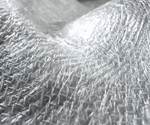Composites UK launches fire performance practical guide
The guide, produced with support from the National Composites Centre, addresses key issues related to fire performance for reinforced composites.

Source | Composites UK
Composites UK (Berkhamsted, U.K.), supported by the National Composites Centre (NCC, Bristol, U.K.), has launched a practical guide on the topic of fire performance for fiber-reinforced polymer composites (FRPs).
With funding from the NCC, the guide was written by Stella Job, Composite UK’s supply chain and environment manager, Tom Royle of Wizz Consultancy and Nigel Keen of Creative Composite Connections.
The fire performance of a composite component or structure is complex, and accordingly, the knowledge base is constantly growing as new products arrive in the marketplace in response to growing demand. This document is meant to address a need to improve the understanding of how the fire performance of FRP components is specified by the engineer and buyer, and achieved by the manufacturer.
The 61-page document covers:
- the key characteristics which define the fire performance of a composites,
- materials and combinations thereof,
- methods of improving properties,
- standards and regulations for sectors,
- testing, and
- future trends.
ity of Bolton and Dr. Sam
Sambasivan, London Underground.
The “Fire Performance of Composites Good Practice Guide” is publicly available to download from the Composites UK website.
Related Content
-
Cryo-compressed hydrogen, the best solution for storage and refueling stations?
Cryomotive’s CRYOGAS solution claims the highest storage density, lowest refueling cost and widest operating range without H2 losses while using one-fifth the carbon fiber required in compressed gas tanks.
-
Plant tour: Albany Engineered Composites, Rochester, N.H., U.S.
Efficient, high-quality, well-controlled composites manufacturing at volume is the mantra for this 3D weaving specialist.
-
Composites manufacturing for general aviation aircraft
General aviation, certified and experimental, has increasingly embraced composites over the decades, a path further driven by leveraged innovation in materials and processes and the evolving AAM market.

.jpg;width=70;height=70;mode=crop)













